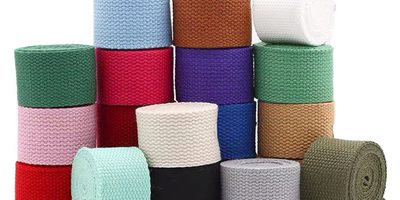Cotton webbing is a versatile and eco-friendly material with a natural charm that appeals to a wide range of industries. In this blog, we’ll delve into the various uses and unique properties of cotton webbing.
1. Sustainability:
Cotton webbing is crafted from natural cotton fibers, making it biodegradable and environmentally friendly. Its production has a lower carbon footprint compared to synthetic materials.
2. Soft Texture:
Cotton webbing is known for its soft and comfortable texture, making it an ideal choice for applications where skin contact is essential, such as in apparel, bags, and baby products.
3. Upholstery and Home Decor:
Cotton webbing is frequently used in upholstery and home decor, providing both strength and aesthetics in furniture, curtains, and decorative trims.
4. Fashion Accessories:
In the fashion industry, cotton webbing is used in belts, straps, and as embellishments on clothing, adding a touch of natural elegance.
5. Craft and DIY Projects:
Crafters and DIY enthusiasts appreciate cotton webbing for its ease of use and versatility in projects ranging from handbags to pet accessories.
6. Medical and Healthcare:
Cotton webbing’s softness and breathability make it suitable for medical applications such as slings, bandages, and patient restraints.
7. Environmentally Conscious Design:
Designers are increasingly incorporating cotton webbing into sustainable and eco-friendly product lines, aligning with the growing demand for eco-conscious choices.
The natural appeal and adaptability of cotton webbing continue to make it a sought-after material in various industries, contributing to both style and sustainability.


















